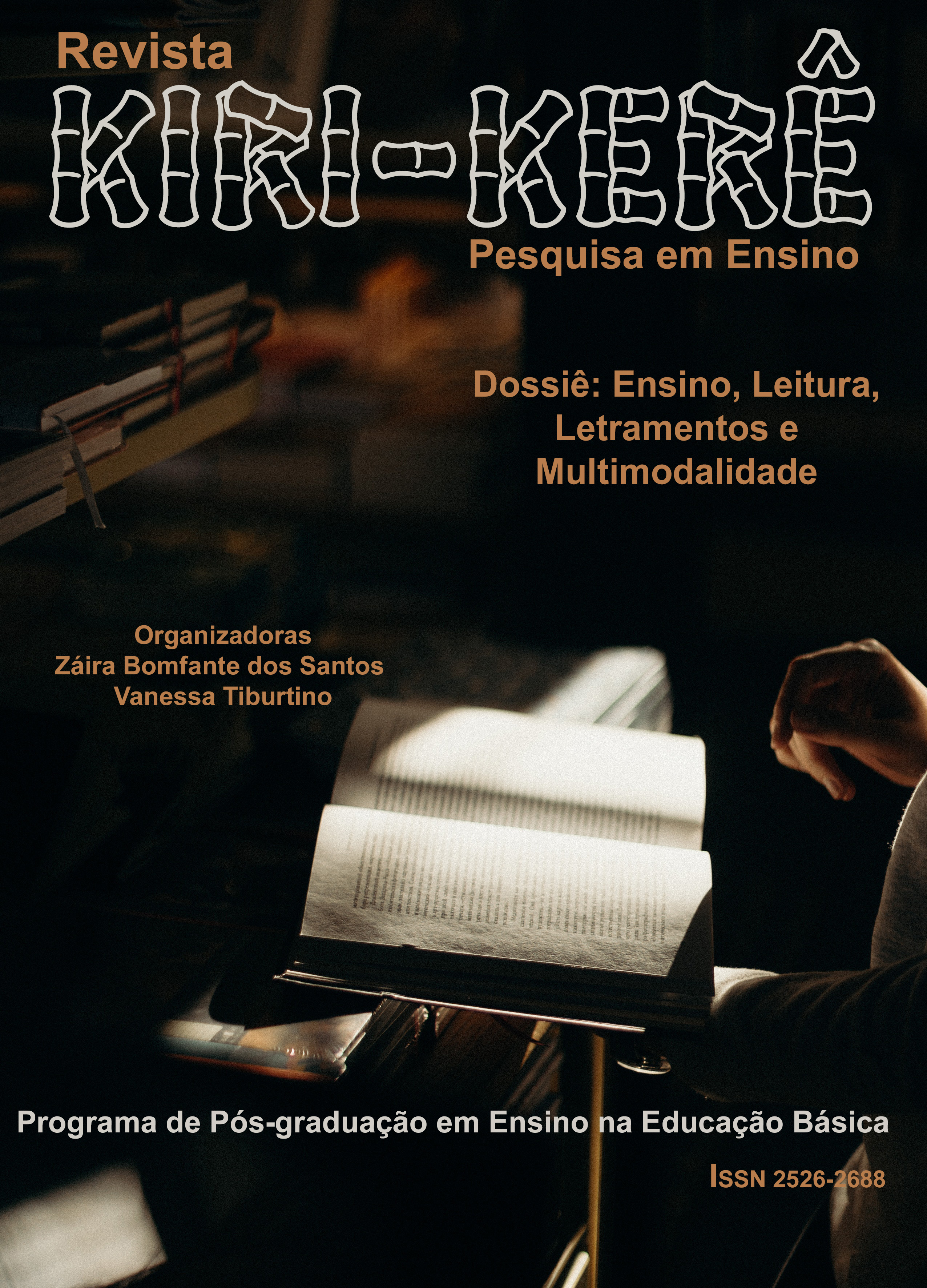Video games as texts in the English classroom:
system-gameplay dimension and the multimodal approach
DOI:
https://doi.org/10.47456/krkr.v1i8.37940Keywords:
learning, games, literacy, english languageAbstract
Video games are present in the lives of our students of different age groups through technologies such as computers, notebooks, Xbox, Play Station and, mainly, cell phones. Aiming to associate activities through this digital media (cell phone) and English language teaching, this paper investigates the interaction through reading and the contributions that platform games can provide to students during the teaching-learning process. Through the contributions of Kress (2010), Cope, Kalantzis (2008, 2009), New London Group (1996, 2000), Gee (2003), Machin (2007) and Pérez-Latorre et al. (2016) we address one of the four levels of the analysis model for the study of video games as texts: the system-gameplay dimension. The results reveal that the interaction through the game as a pedagogical tool dialogue with other semiotic interfaces, providing a more critical and reflexive posture in the textual composition of the game narrative.
Keywords: learning, games, literacy, english language.
Downloads
References
COPE, Bill; KALANTZIS, Mary. Multiliteracies: Literacy learning and the design of social futures. London: Routledge, 2009.
FERRAZ, Daniel de Melo; SANT’ANNA, Pedro Moreno. Jogos digitais e educação linguística: precisamos falar mais desse encontro. Perspectiva, volume 38, n. 2, Florianópolis, UFSC, 2020, p. 1-16.
GEE, J. P. What video games have to teach us about learning and literacy. London: Palgrave Macmillan, 2003.
GUALBERTO, C. L.; SANTOS, Z. Multimodalidade no contexto brasileiro: um estado de arte. Delta: Documentação de Estudos em Lingüística Teórica e Aplicada, [s.l.], v. 35, n. 2, p.1-30, 2019. FapUNIFESP (SciELO). Disponível em: http://dx.doi.org/10.1590/1678-460x2019350205. Acesso em: set. 2019.
KRESS, G. Before Writing: Rethinking the paths to literacy. London: Routledge, 1997.
KRESS, G.; VAN LEEUWEN, T. Reading images: the grammar of visual design. London; New York: Routledge, 2006.
KRESS, G. Discourse Analysis and Education: A multimodal Social Semiotic Approach. In: ROGERS, Rebecca. An introduction to critical discourse analysis in education. 2nd ed. London: Routledge, 2011.
MACHIN, D. Introduction to Multimodal analysis. London: Hodder Education, 2007.
MENEZES, Lynn Mário de Souza. Educação linguística: repensando os conceitos de língua e linguagem. In: KAWACHI-FURLAN, Claudia Jotto. (Org.). Bate-papo com educadores linguísticos: letramentos, formação docente e criticidade. São Paulo: Pimenta Cultural, 2019, p. 246-259.
NEW LONDON GROUP. A pedagogy of multiliteracies: designing social futures. Harvard Educational Review, v. 66, n. 1, spring 1996, p. 60-92.
NEW LONDON GROUP. Multiliteracies: Literacy learning and the design of social futures. London: Routledge, 2000.
PÉREZ-LATORRE, Óliver; OLIVA, Mercè; BESALÚ, Reinald. Videogame analysis: a social-semiotic approach. London: Routledge, 2016.
Downloads
Published
Issue
Section
License
The authors accept, when sending their works, the assignment of their copyrights.

